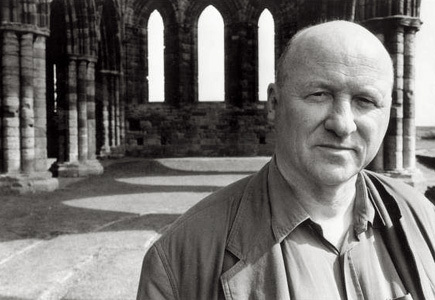New World Percussion Consort finds a wry postmodern twist for Valentine’s Day

Gavin Bryars’ “One Last Bar Then Joe Can Sing” was performed by the New World Percussion Consort Saturday night.
The New World Percussion Consort’s “Heartbreakers” concert on Valentine’s Day was a passionate love letter to nineties postmodernism’s many charms. Postmodernism is the observational comedy of contemporary music, imbuing classical genres with modern life. Quirky and often hilarious, it proves that you can’t judge a musical century by its bad reputation.
Usually the Percussion Consort programs enlist other NWS instrumentalists, but this concert was all about percussion. Calling it the “sexiest section in the orchestra,” conductor Michael Linville curated a pleasurable evening of short works, augmented by video program notes from each of the composers on the program.
Pulitzer Prize-winner Caroline Shaw explained that her 2012 percussion quartet Taxidermy reflects the awkward silences in music, the kind of silence that might ensue if you told a date that you were “really into taxidermy.” The concept is interesting, but her execution of additive rhythms on quiet, brittle flowerpots against pleasantly disconnected harmonies on vibes and marimba was overlong and unconvincing, too subdued to justify the multiple reprises of her slight material.
In contrast, Pulitzer winner David Lang delivered the goods in Cheating, Lying, Stealing from 1993, a powerhouse combination of limited, grungy riffs and masterful play on expectations. Lang cheats the audience by deceptively adding or stealing beats from his repeated phrases, framed by trendsetting use of a car’s brake drums as anvils. The distinctive sheen resonated splendidly in the New World Center thanks to a crack unison performance by the ensemble, a tight fusion of Chris Riggs’ woody marimba, Aya Yamamoto’s piano chords, Miles Jaques’ punchy bass clarinet and Andrew Larson’s amplified cello descants. Lang puts the bang in Bang on a Can, a perfect musical match for New World’s sonic youth.
Dave Hollinden’s goal in 1993’s Surface Tension was fusing rock’s driving energy with classical music’s rigor. Though he called the work a sonata, jumpy sections make it a rock concert drum solo squared, with matching drum set-ups, and even a final gong strike at the end. In true postmodern style, drummers Daniel Morris and Michael Van Wirt delighted the crowd by whipping out seventies style head- and wrist-sweatbands before duking it out in the improvised central section. Stadium lighting, body language, and the performer’s obvious enjoyment shone in this percussionist’s dream piece.
NWS concerts are often artistically staged these days, and Gavin Bryars’ One Last Bar Then Joe Can Sing from 1994 was a sensory delight. The work opens with blooms of harmonics ringing off into silence, accompanied by luminous emerald lighting and projections of geometric sunbursts.
Led unobtrusively by Linville, the full consort of percussion fellows sustained the fifteen-minute sonic landscape. Bradley Loudis’ low marimba lines, complemented by Alex Wadner on xylophone, provided a roadmap against an ever-present halo of wind chimes, bowed vibraphone and crotales. Enchanting, shimmering consonances made for a transcendent, nearly psychedelic experience. A transition to ruby and fuchsia visuals marked the slightly more rhythmically activated Più mosso, as repeated notes trembled across the vast sonic landscape. Finally, pale sky blue lighting signaled a brief coda of gently falling, overlapping bowed metal tones, capping off the sensuous evening.
Posted in Performances
Leave a Comment
Sun Feb 15, 2015
at 11:52 am
No Comments
